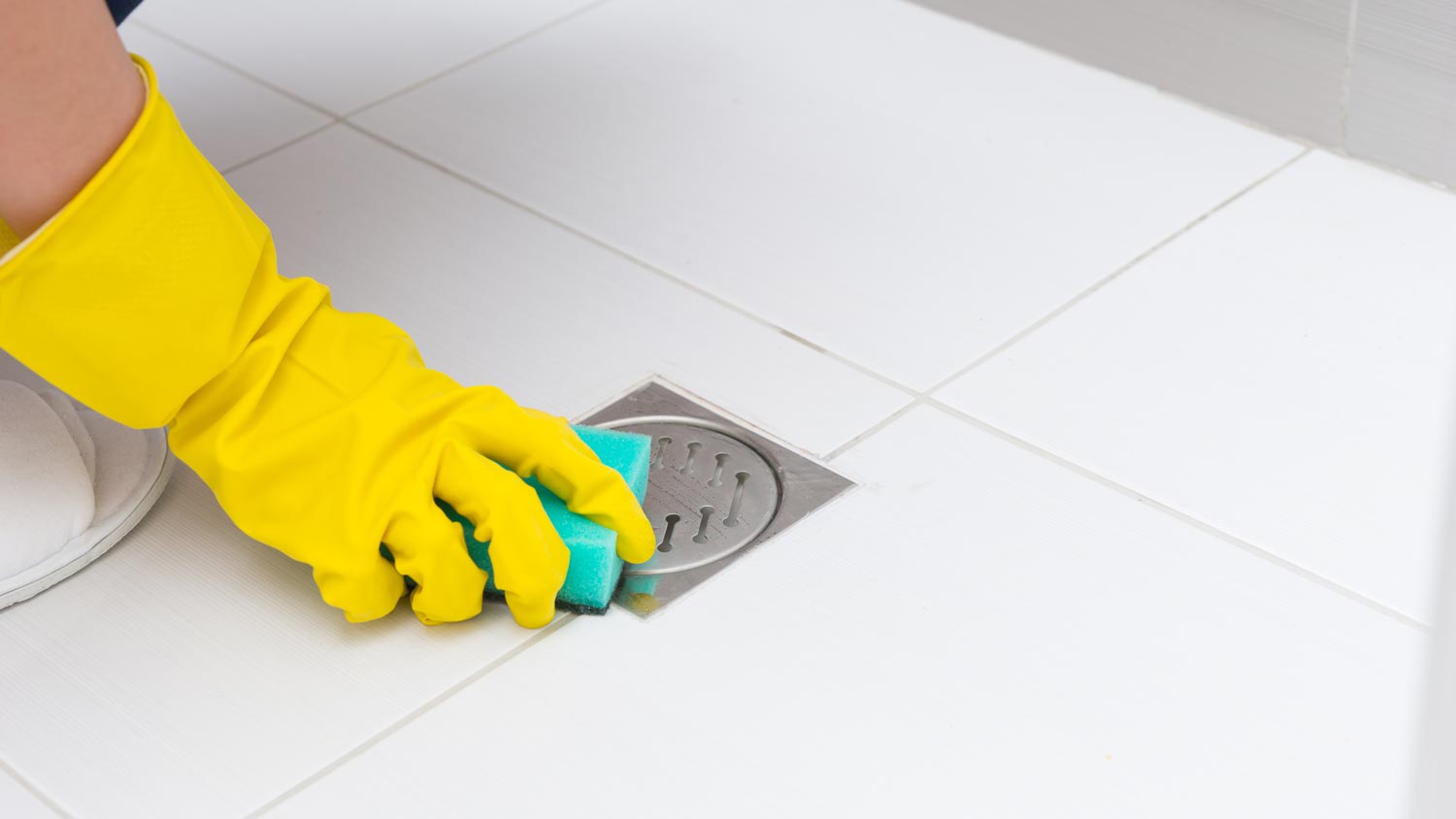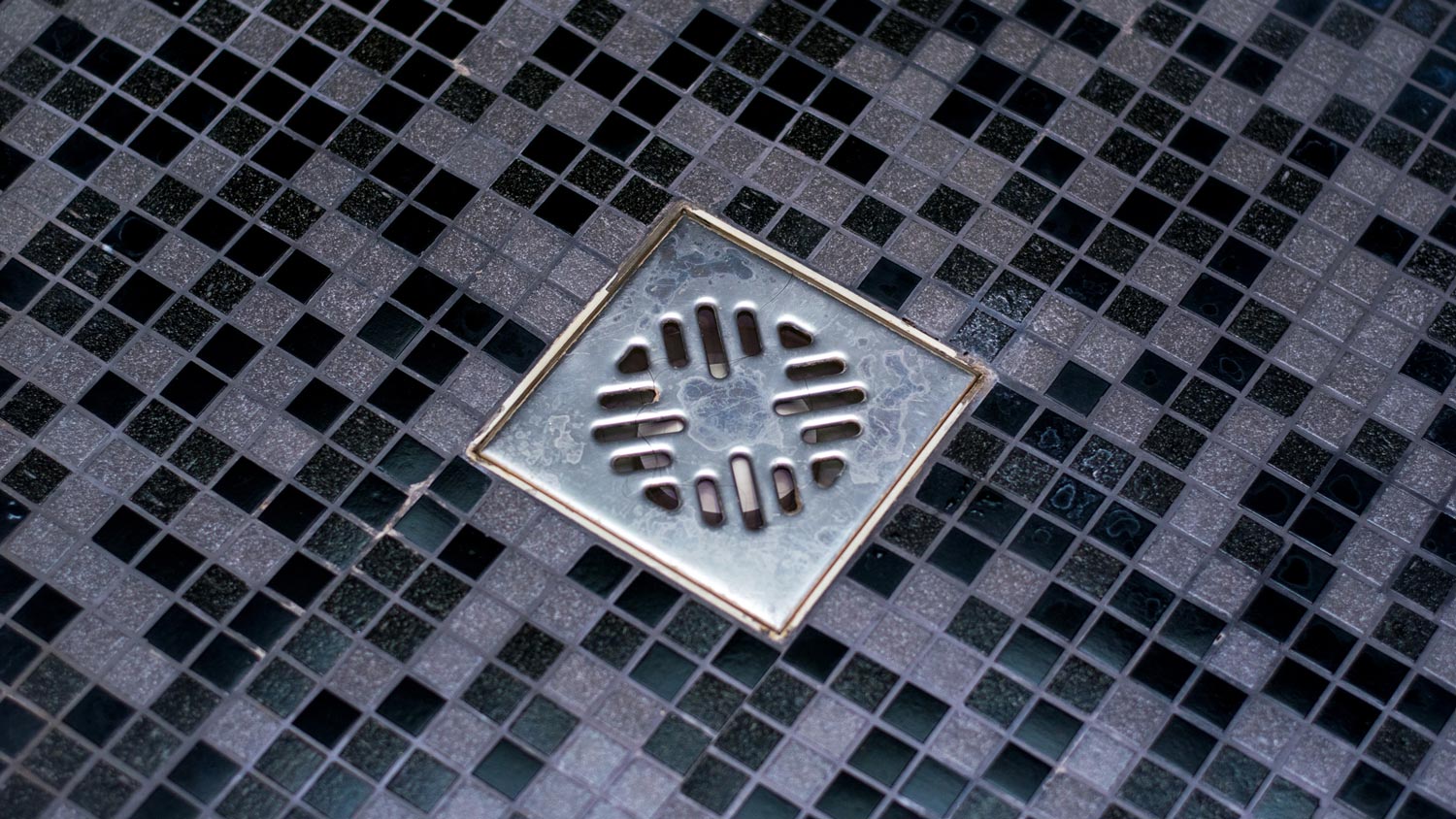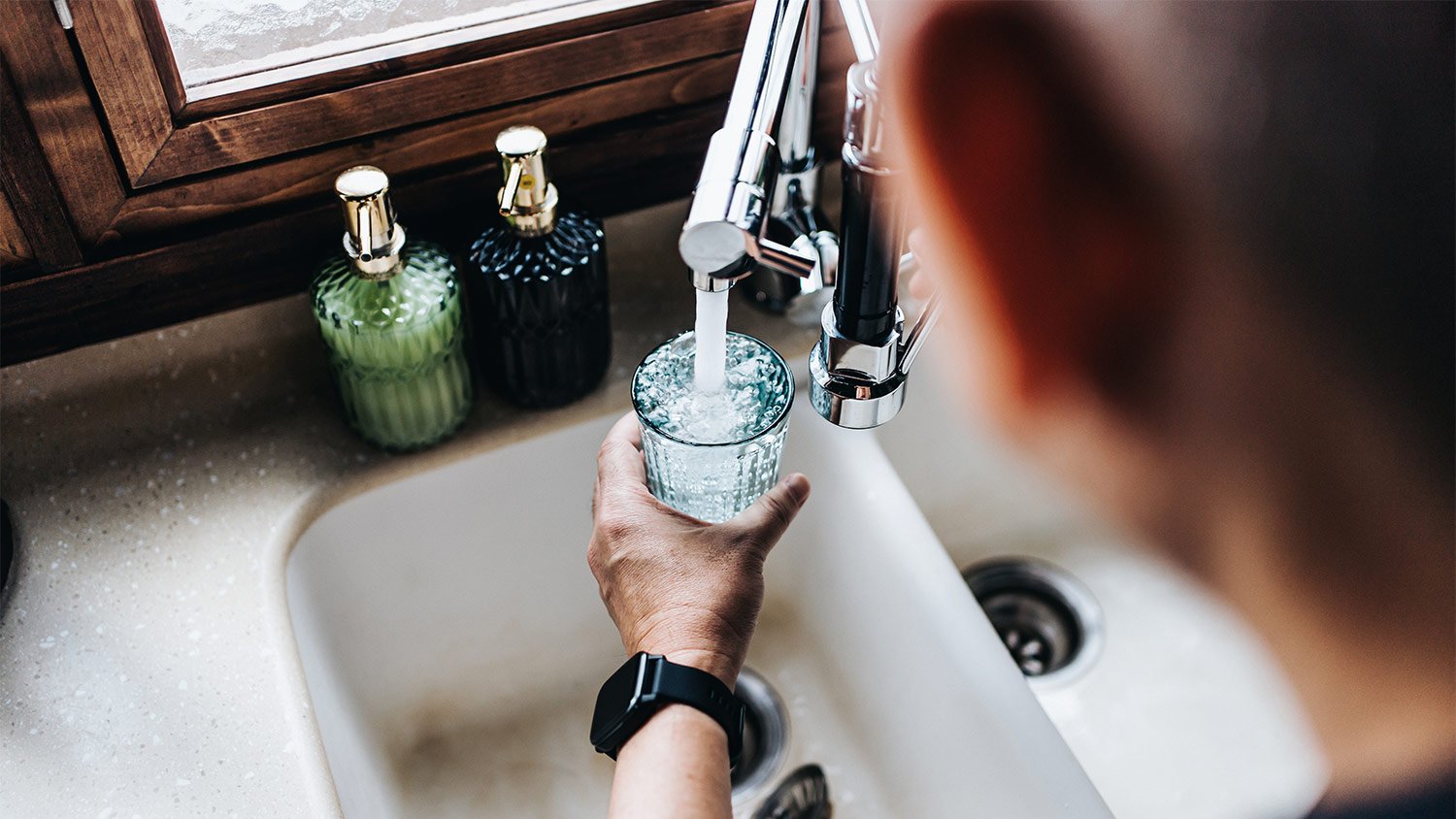
Discover the cost to replace drain pipes in a house, including average prices, key factors, and tips to save on your plumbing project.
Tackling a smelly shower drain doesn't need to be draining


Considering everything a shower handles on a daily basis—soap scum, hair, and hours of steamy, muggy moisture—it's no wonder the drain gets smelly from time to time. Learning how to clean a shower drain is a must-have skill both before and after suspicious smells interrupt your precious morning ritual. As you perfect how to clean your shower, add these odor-fighting steps to keep your shower drain smelling fresh.
Have you ever gotten a strong whiff of sewage or the scent of a musty basement when you step into the shower? Cleaning a smelly shower drain may be necessary for something as simple as a clog or as complicated as a leaky pipe. In many cases, you can get to the bottom of your smelly shower drain based on the odor itself.
The most obvious reason your shower drain smells is a basic clog. Hair, soap scum, and foreign objects can block the free flow of water through your pipes and leave its remains stuck, which can cause odors. Even if you use a hair trap and are certain you didn't drop any small objects down the drain recently, soap scum can do a number on your pipes. Sewage-like smells are commonly a sign of a clog somewhere in your shower drain.
When you have a clogged drain, you’ll know it. You might be able to see an object or buildup in the drain, or the area around the drain might smell bad. Look for these signs:
Water slowly rises around your feet during a shower
Water takes longer than usual to drain
Bad smells resembling sewage or rotten eggs are coming from the drain
A sewage smell from your shower drain may also indicate an issue with your P-trap. Just like the curved portion of the pipe under your bathroom sink, the P-trap under your shower drain plays an important role. It collects debris, dropped objects, hair, and soap scum over time to protect the rest of your pipes from clogs. It also holds a bit of water at the base of the trap to keep sewer gasses from backing up into your bathroom.
So, if your P-trap leaks sewer gas smells, this could be a sign that the part of the pipe is either clogged or has gone dry. The P-trap can run dry if you haven't used your shower in a while, if you live in a very hot climate, or if there is a leak somewhere in your system.
Getting rid of mold in your bathroom can feel like a Sisyphean task. A bathroom—particularly the drains—is the perfect place to grow mold and biofilm. Between the constant heat and moisture, mold and all the microorganisms we wash off in the shower can build into quite a disruptive problem in our drains. Not only will the buildup start to smell musty, but it can cause clogs as well.
In extreme cases, the wastewater from your shower never makes it to the drain line. Rotten egg and sewage smells can also be a sign of a leaking pipe. Wastewater can seep into the surrounding floors and walls of your bathroom.
Also, remember the P-trap? A leaking P-trap or drain line can cause a smelly shower drain as well. Sewage gasses kept at bay by the design of your trap will be allowed to float back into your bathroom, leading to less-than-fresh shower time.

In most cases, eradicating a smelly shower drain is an afternoon task you can pair with the rest of your chores. However, if the odors stem from a clog or a leak, you may need to call in the plumbing pros. Here’s how to clean a smelly shower drain in no time.
If the smell is a new development and you've yet to experience standing water in your shower, sanitizing the pipe may do the trick. Smelly drains can stem from either mold or biofilm buildup. In either case, you can simply clear the drain with one of the following solutions. Keep in mind that you should never combine cleaning products, including ones from your pantry, such as vinegar.
Begin by checking how to remove the shower drain on your unique model. While wearing gloves, remove any visible balls of hair or grime. You can use a soft-bristled toothbrush as well.
Once you've opened up the drain, choose one of the solutions below (again, do not combine them):
Pour four cups of boiling water down your drain.
Sprinkle a half cup of baking soda into the drain and follow with a half cup of white vinegar and allow it to sit for 15 minutes before rinsing with water.
Combine a half cup of bleach with two cups of warm water and pour slowly.
Sanitize with a drain-safe commercial cleaner and follow the instructions on the container.
Sanitize your drain at least once a month to get ahead of common mold and biofilm buildup.
The P-trap lives directly below your shower drain, so you can sanitize it at the same time as cleaning the opening of the drain as we did above. Use any of the solutions listed above, but allow for a longer soaking time before rinsing the solution.
Important note: If you suspect that the smells are coming from your P-trap and sanitization does not do the trick, you may have a larger problem. At this point, it is important to call a plumber near you to inspect whether there is a leak in or around your P-trap.
The smell could also come from deeper in your system, even your sewer line. A plumber will determine how often to clean your sewer line depending on its age and your home design, but once every 18 to 22 months is ideal.
If water pools at your feet when you shower, a clog is likely the culprit of the odor. There are several ways to unclog a drain, from pulling out the clog with your hands or a drain snake to using household products to dissolve the residue. We've briefly touched on similar tactics to sanitize your drain above, but outline them in more detail below (to tackle complex clogs).
You might be able to see and reach the clog without any special tools or products. It might make you feel squeamish, but you can put on a pair of cleaning gloves and reach into the drain to pull out whatever is causing the clog.
You can clean with baking soda and vinegar, but did you know you can safely combine them into a powerful, fizzy solution for clogged drains? First, pour hot water down the drain (but not boiling water). Then sprinkle 1/2 to 1 cup of baking soda into the drain and follow it with 1/2 to 1 cup of distilled white vinegar.
Let the baking soda and vinegar react and fizz for 10 to 15 minutes. Rinse the drain out by pouring in more hot water.
Bleach helps kill smelly mold or mildew in the drain. Dilute 1/2 cup of bleach into 2 cups of hot water. Then pour the diluted bleach down the drain, and allow it to sit for one hour. Rinse the drain with hot water.
Hot water works great with a baking soda and vinegar mixture—or alone with bleach—to clear away clogs, but it can also work on its own for smaller clogs. Just be sure not to use boiling water if you have PVC pipes, or it could deform or melt the plastic piping.
You can use a commercial liquid drain cleaner to try to loosen and dissolve shower drain clogs, but you should be aware of the pros and cons of liquid drain cleaner. They can cause corrosion and wear and tear on your pipes in older homes. If you go this route, follow the instructions on the product label to clean the drain.
A drain snake is a flexible tool that can reach into the drain to capture and remove a clog. Power snakes can reach several feet deep, but you can get short, plastic versions that work on smaller clogs closer to the drain opening.
Carefully push the snake into the drain. Rotate the snake around until you feel some resistance. Continue moving the snake around to capture the clog or break up the residue. When there is no more resistance, retract the snake.
Throw away any clogged material that comes up with the snake—you might find a ball of hair and soap residue—and clean the snake after using it. Word to the wise: Be ready for some unpleasant odors after this procedure. It may be helpful to open a window while you work.
Plungers aren’t just for toilets. In fact, many of the small plungers you see at the store are best for unclogging sink and shower drains. Before you start plunging, ensure you have a clean plunger reserved for the shower drain.
Close or cover the shower drain, and fill the bathtub or shower basin with enough water to cover the base of the plunger. This allows the plunger to form a tight seal over the drain. Open or remove the cover on the drain. Quickly, before the water depletes, place the plunger over the drain.
Push down and pull up on the plunger a few times. Repeat this a few more times if the first attempt doesn’t work. If it’s still not working, try another method or call a plumber.
There are several instances when you should call a professional plumber the moment you smell something funky from your shower drain. If you spot any signs of a leak in your bathroom—such as stains on your ceiling, floor damage, or a musty smell coming from other areas of the room—call a plumbing pro immediately. Fixing bathroom pipes is not a DIY job and the water can cause serious damage in just a few days.
Smelly drains are not uncommon and, unfortunately, will come back if not watched carefully. You can keep an eye—or nose—out for growing issues and check off weekly preventative measures to keep odors at bay.
One easy and effective way to prevent clogs and smelly shower drains is to use a drain cover. Drain covers can catch any foreign bodies, like toy pieces or that last slippery little bit of a soap bar, before they go down the drain. There are even hair-catching drain covers to keep strands of hair from entering the drain, where they will commingle to become one massive, clogging clump.
Oily soaps, hair masks, lotions, and body scrubs create a spa experience at home, but they can do a number on your drain. Other products with large exfoliating pieces—think oatmeal or beads—can also contribute to a clogged drain. Save these products for after your shower, switch to alternatives that are safer for your drain, or use a drain cover. Be sure to clean the drain after you shower with these products.
Even if the drain isn’t clogged, regularly cleaning a smelly drain can help prevent buildup. About once per month, pour baking soda and vinegar or hot water into the drain to clear away any residue. Use a small brush to remove visible mold or biofilm from the opening of your drain and rinse the area with a cleaning solution. Be sure to clean the back of your shower drain cover as well.
Monthly P-trap and pipe cleaning are also helpful, though a good flush with one of the homemade cleaning solutions above will do the trick for both the drain and your pipes. Checking and cleaning your pipes monthly can help you catch larger issues that require a plumber.

If you hire a local drain cleaning pro, the cost to clean a shower drain averages $225 for the visit. The price will vary depending on the cause of your smelly shower, though most plumbers will use a snake and basic cleaning solutions to get to the bottom of it. In most cases, you can start by cleaning the drain yourself. DIY solutions vary in cost:
Drain snake: Snakes range from $3 for a small snake to around $80 for a power snake that goes 25 feet or deeper.
Plunger: A regular plunger for a drain costs about $5 to $10.
Commercial drain cleaner: A jug of drain cleaner costs about $5 to $20, depending on the brand and size of the product.
Homemade drain cleaner: Baking soda and vinegar typically cost less than $10. You might pay more if you buy in bulk.
Cleaning a drain is easy to DIY, but homemade solutions don’t always get to the root of the cause. It’s important to call in an expert for help if you can’t unclog the drain or get rid of the shower smell yourself. In this case, a plumber may need to replace the drain or surrounding pipes to keep clogs and smells from coming back. The cost to replace a shower drain ranges from $230 to $1,200 depending on the cause of the damage.
Paige Bennett contributed to this piece.
From average costs to expert advice, get all the answers you need to get your job done.

Discover the cost to replace drain pipes in a house, including average prices, key factors, and tips to save on your plumbing project.

If you have a clogged pipe and natural methods are not working, you may need something stronger. How do drain cleaners work? Find out in this guide.

How do I drain the water lines in my house? This guide will walk you through it in five simple steps, along with tips to prevent damage to your plumbing.

Clogged drains are a pain and can be persistent if you don’t deal with the blockage. Use this guide on how to snake a drain to save money and DIY a solution.

Tub drain sizes are standardized, but they can vary in certain circumstances. This guide will discuss the most common sizes and how to measure your tub.

If you’ve got a slow-draining bathtub, it could be due to hair buildup. This complete guide will show you how to remove hair from the drain.